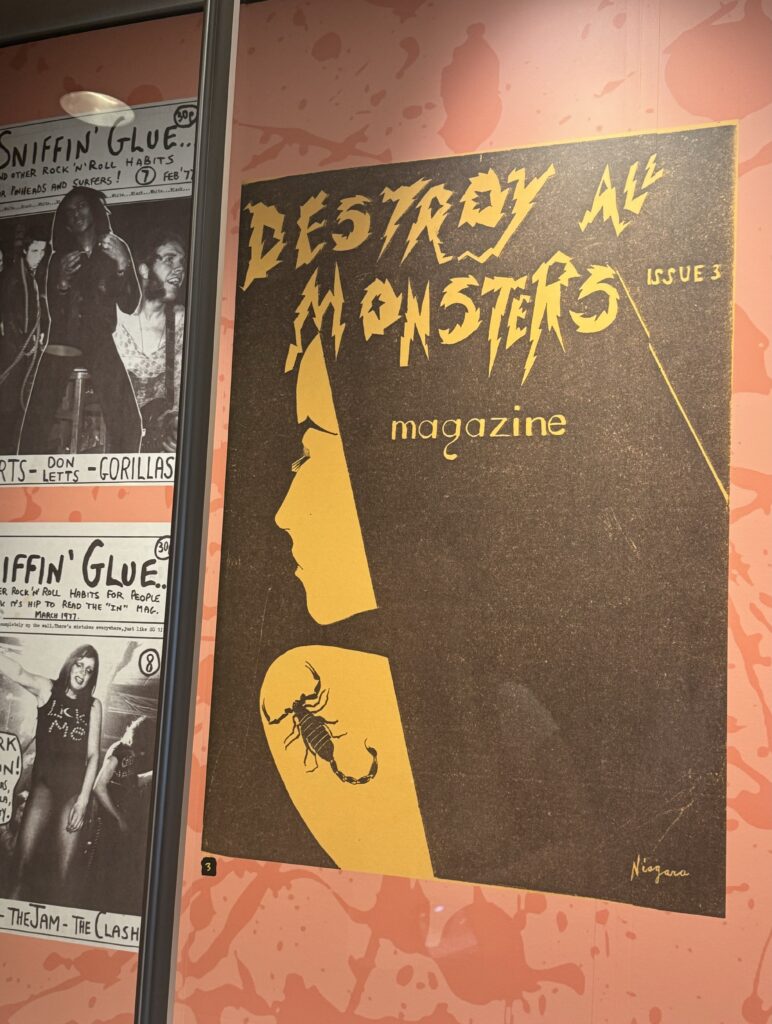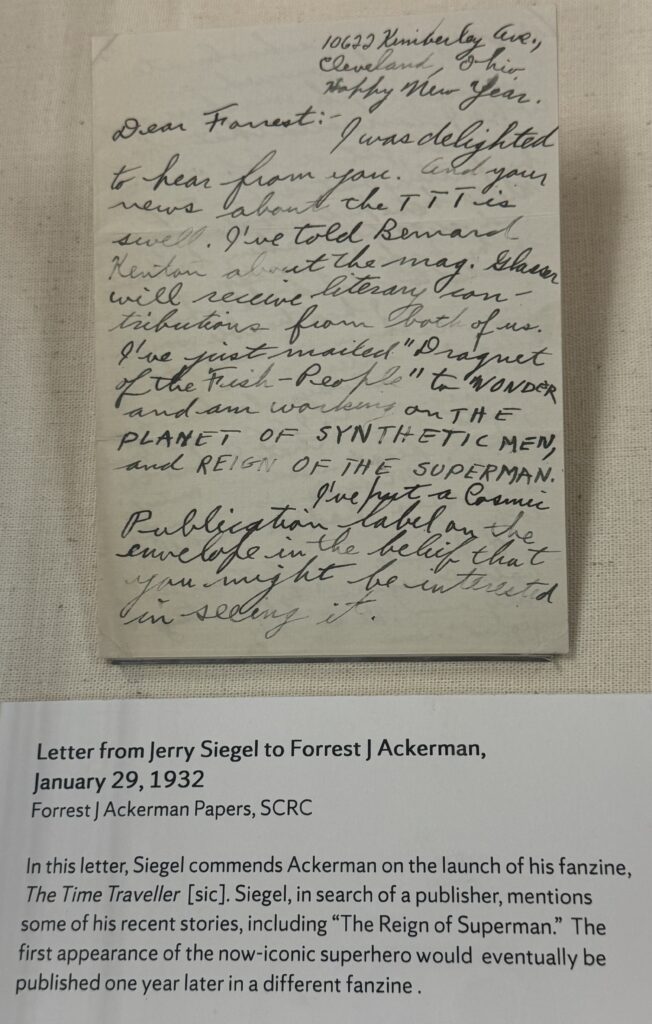A look inside Syracuse University Bird Library’s “Destroy All Monsters” Archival Exhibit

Every day, hundreds of Syracuse University students make their way into Bird Library. What they may not realize is that located on the 6th floor, the Special Collections Research Center (SCRC) is home to some of the most rare and unique items in the world, including a letter signed by Mary Queen of Scots herself and an ornate page from the Gutenberg Bible.
Every few months the SCRC puts on a new archival exhibition, allowing some of the collections’ forgotten objects to get their chance in the spotlight. Last month, the ‘Destroy All Monsters: Developments in Fandom and Participatory Culture’ exhibit opened on Bird’s 6th-floor gallery, providing a diverse examination of almost 100 years of fandom communities through physical objects and visual art forms.

Danny Sarmiento, curator of “20th Century to Present” at the SCRC, created the exhibition and spoke about the purpose of showcasing items like these to the greater SU community.
“We [SCRC] collect, preserve, and make accessible the library’s rare book and manuscript collections and archival collections, and one of the ways we make them accessible is through exhibitions like these,” said Sarmiento.
With the “Destroy All Monsters” exhibit, curators took on a question that Sarmiento acknowledged is a hard one to answer: What does it mean to be a fan?
The exhibition attempts to answer this question through its varying displays, which cover everything from a letter by Superman creator, Jerry Siegel, about publishing the original comic, to those written by ‘60s fanboys to The Time Traveller founder Forrest K. Ackerman. The exhibit also includes rare video footage of a costume contest held at a convention in 1989.

Syracuse University senior, Lily Brooks, was drawn to the exhibit by a pre-existing interest in “zines,” small-batch independent magazines created out of a passion for a certain topic, as opposed to financial gain. Zines serve as the subject for Brooks’ Television, Radio, and Film capstone. Students are allowed to explore any and all of their artistic interests.
“I’ve always been interested in magazines,” Brooks said, “I started getting an interest in finding magazines I couldn’t find anywhere else, which kind of naturally progressed into discovering zines.”

Unlike Brooks, other attendees had broader areas of interest that led them to discover the exhibition.
Retired SUNY ESF professor John Felleman came to explore the collection because of his interest in graphics.
“The exhibit is science fiction, but there was also an explosion of comics and illustrated stories in other magazines that weren’t science fiction. So there’s a lot going on in this period,” Felleman said.
Although the exhibit has a primary interest in science fiction, it also draws a connection to horror cinema fans, and fans of varying music genres in the late 1900s.
“A lot of what’s on display… kind of comes out of the sort of DIY material culture that a lot of these fans have left behind,” Sarmiento said.
The exhibit explores a tremendously human reaction to discovering something you love; to create more art in response.
From differing backgrounds and interests, generations of fans have created these items out of a shared passion, connecting them together by a single thread that makes the “Destroy All Monsters” display unique.
“Comics could do almost anything,” Felleman said. And so too, it seems, can fans.
